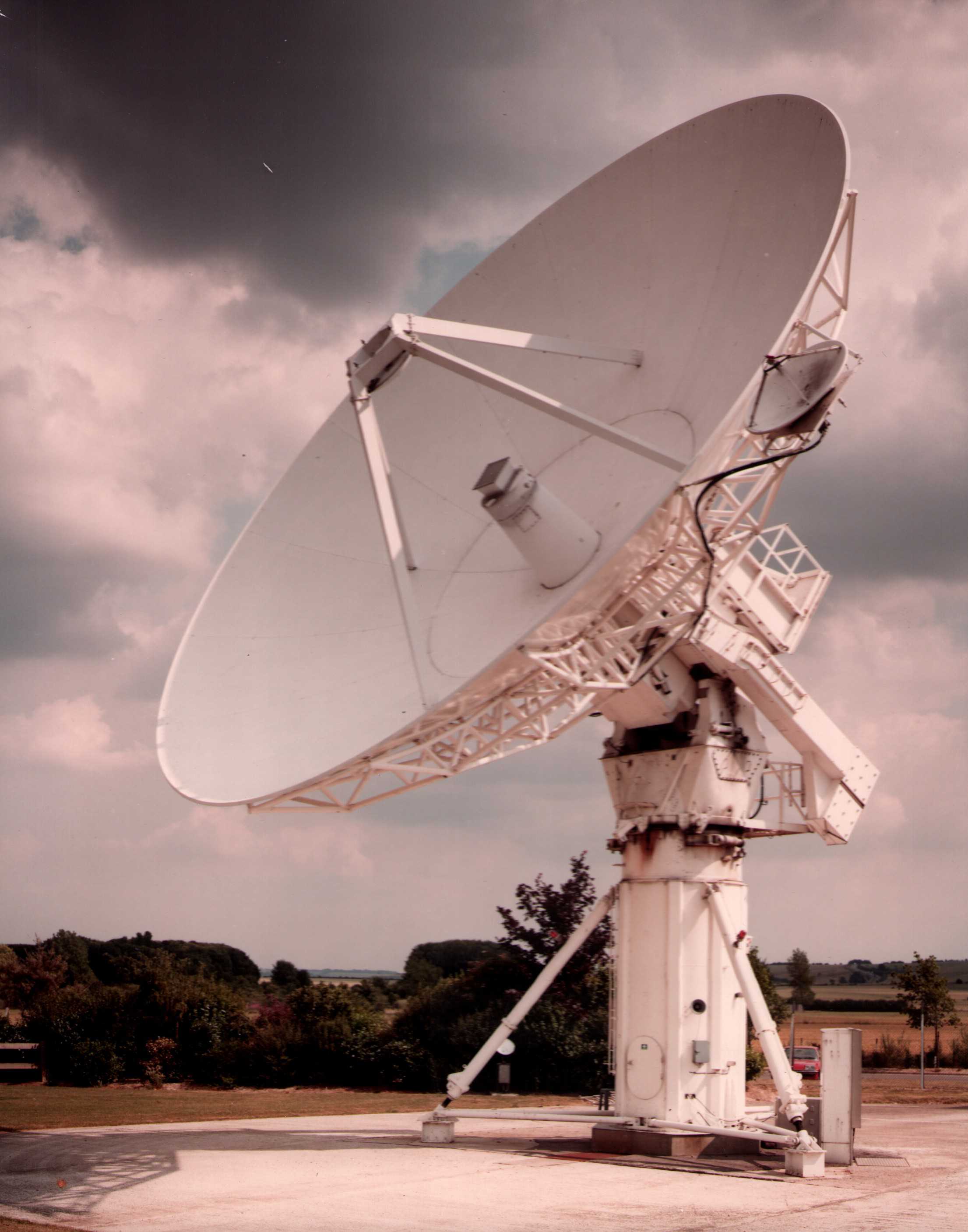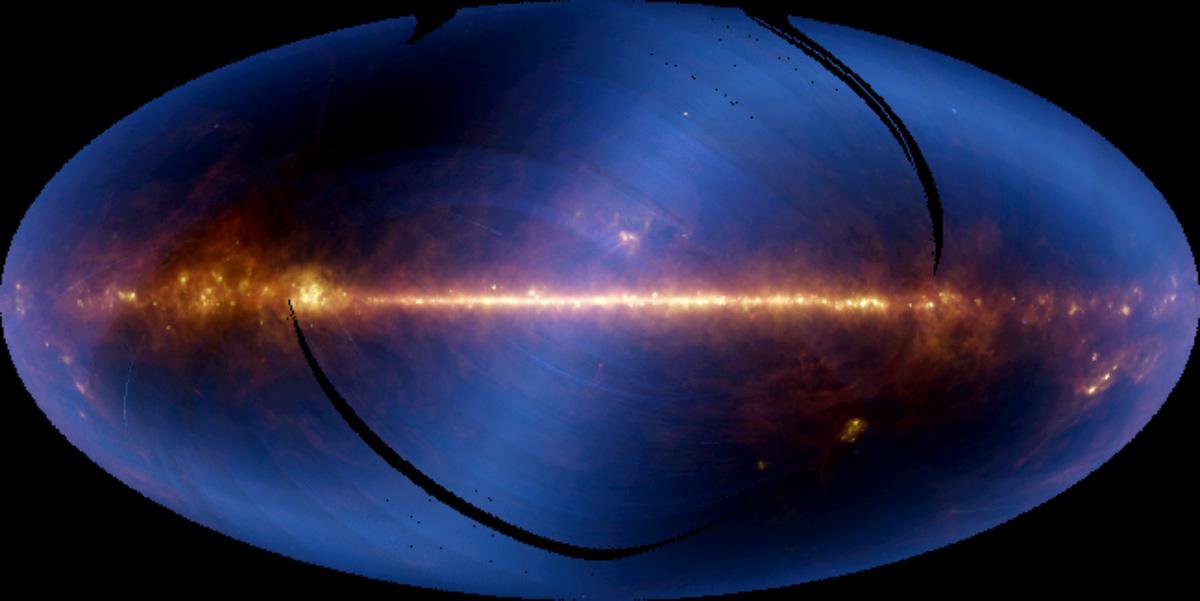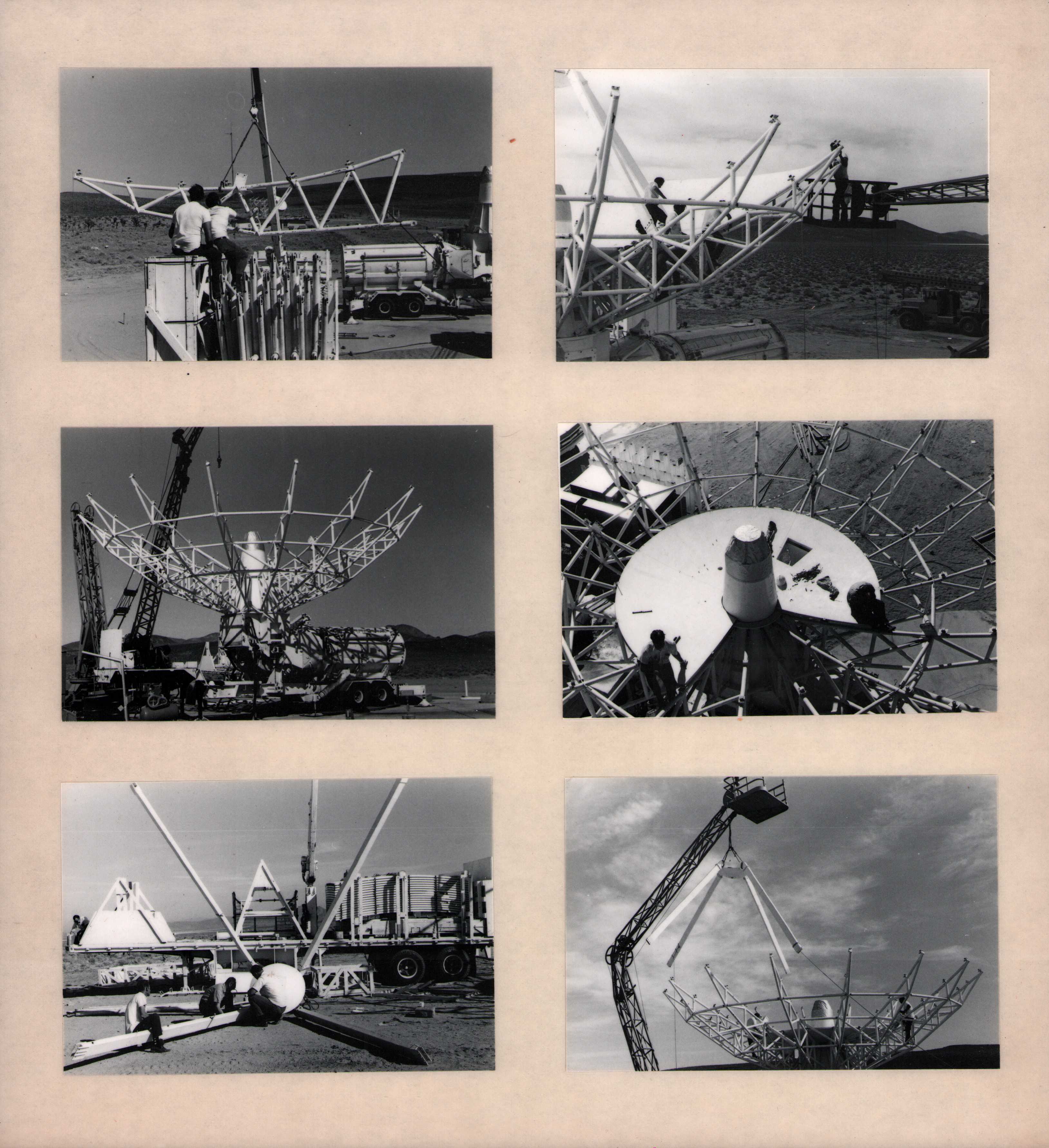

In 1973 the Radio Research Station at Ditton Park near Slough was renamed Appleton Laboratory in honour of Edward Appleton who had died a few years previously. The Laboratory was closed down a few years later in 1979 and the facilities and staff were transferred to Rutherford Laboratory. For a while the combined institute was known as The Rutherford and Appleton Laboratories but eventually settled to Rutherford Appleton Laboratory.

Until then Rutherford Laboratory had not had a program of space-related work but the merger brought with it considerable expertise and a 12m satellite dish (technically a Transportable Ground Station) which was installed next to what is now the RecSoc (Recreation Society) building and supported the IRAS mission to survey the entire night sky at infrared wavelengths.
The dish had been built on behalf of NASA who shipped it in October 1966 to Cooby Creek Tracking Station, Queensland, to support their Application Technology Satellite Program (ATS-2). This mission pioneered satellite communication and allowed Australians to see on 6th April 1967 the very first live satellite images of their country.
The weight of the antenna in its original configuration was 33 US tons. The weight at the elevation axis was 27,000 lbs; at the azimuth axis 39,000 lbs; At at the pad 65,000 lbs. For the parabola itself:








See also:
Towards the end of 2020 the dish was disassembled. The base was scrapped but the dish itself was put into storage. The intention is to reconstruct it elsewhere on site as a piece of statement art.
Memos and telexes have recently come to light which indicate that the antenna was shipped from Goldstone to Appleton Laboratory in May 1978. The July/August 1978 issue of the Appleton Laboratory Newsletter begins with an item by Mike Quigley "Cleopatra comes to Slough":
"But how, but how? give me particulars." -- Iras, attendant of the Queen in Shakespeare's "Antony and Cleopatra", Act I Scene II
Iras' question seems particularly apposite to many of us who attended discussions over the last couple of years on the other IRAS -- the Infra Red Astronomy Satellite: in a large international project, each party invests so much time, money and effort that naturally they want to be sure that the other parties are doing their part correctly, so critical questioning is the order of the day. Certainly this was the case with the UK Tracking Station for IRAS; in the location proposed, and with each change it has been necessary (and rightly so!) to show in detail the advantages of the new location over the old.
Originally it was proposed to make use of the 25m dish aerial at Chilbolton. This had the disadvantages of being relatively removed from Slough (which created problems in getting large volumes of data to the Slough Control Centre), of interfering with the various in-house and university research programmes on the Chilbolton dish, and of being larger than really necessary for the reception of IRAS telemetry (a 12m dish would do). Nevertheless, project finances didn't allow us to consider buying another dish, and there seemed to be no choice in the matter; that is, until some of the American participants in IRAS, working at NASA's Jet Propulsion Laboratory in Los Angeles, drew our attention to a NASA 12m dish aerial which had been standing unused for some while, in the Mojave Desert about 150 miles inland from Los Angeles. The Mojave Desert is so littered with NASA tracking stations that you feel they could easily spare one or two, and this is just about the way it is: on the one site they had not one but two 12m aerials, both out of service. Choosing one looked easy: the one was designed to be transportable, is designed for easy disassembly and re-erection, and comes with a couple of road trailers which carry most of the bits and pieces; the other weights half as much again and, pursuing our Egyptian metaphor, looks almost as permanent as the Pyramids! On the other hand, our chosen aerial needed work on the drive system, whose moving parts might well need quite a lot of attention after being stationary for a few years. We chewed over the pros and cons but in the end the likely disassembly cost of the heavier dish looked so horrendous that we opted for the transportable one.
Our first thought was to locate the dish at Winkfield, making use of the receivers, transmitters and other equipment there, and proposals along these lines were put to the various parties in the project and accepted. However some awkwardness remained: although Winkfield is much closer to Slough than is Chilbolton, it still carries the disadvantages associated with setting up a system on a distinct site -- travelling to and fro, the need for more operating staff, carrying magnetic tapes full of IRAS data to Slough for processing, and so on. What eventually changed the situation was our receipt of another gift: this time we acquired a surplus receiver-transmitter from the Madrid STDN station, capable of handling the phase-modulated 2 GHz communications with IRAS. This, combined with the computer facilities of the Slough Control Centre, effectively does the same job as the hardware at Winkfield, and allowed us to plan a Tracking Station located at Ditton Park, with a tracking operation room in C Spur, closely tied in with the satellite control centre.
Formal negotiations with NASA to acquire the transportable dish and with firms to place a contract for its removal to Slough took a little while, but finally the arrangements were made, and Les Martin and Ralph Downton spent some time in the Mojave Desert watching our chosen contractors pull the dish to pieces -- which they did very effectively! The pieces were taken to beautiful downtown Burbank for packing, hauled across the USA to New York, and shipped to Greenock -- where Les was on hand to make sure they didn't drop it in the water. Finally it was hauled down to Slough and now sits at the end of the road beyond Hut 1 -- as most people will now have seen.
What now? In the laconic words of our friends at JPL: "You've got the pieces -- all you've got to do is make it work." To make it work, Les Martin will be re-erecting and refurbishing the dish; Ralph Downton will be getting a new drive system fitted; and Tim Bevan will be installing communications hardware on the dish and in C Spur, aided by Hari Shah and Gordon Fleming, the whole thing will be linked with the Control Centre equipment, run by Alan Rogers, Mike James and their colleagues. When IRAS flies in 1981, it will track two passes per day, receiving 4.5 x 108 bits per pass and transmitting new program instructions to IRAS' onboard computer. But all this is some way off. Meanwhile the dish will become part of our lives; perhaps we should give it a name? How about Cleo? After all she was the one who gave Iras her instructions.